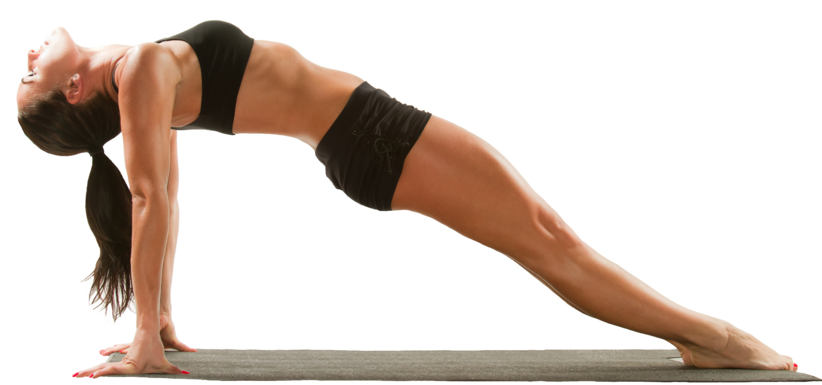With over 10 million people in the UK suffering regularly from headache, it’s one of the most common health complaints, but did you know Pilates could be your natural saviour?
We speak to Lynne Robinson, Founder of Body Control Pilates and author of Pilates For Life, to find out how Pilates can help!
“People forget that Pilates is both mind and body training and even a short Pilates session can help you unwind and relax. This in turn can be helpful with some of the more common types of headache, such as those caused by tension or by poor posture.
Release that tension
“As you focus on controlling your Alignment, Breathing and Centering, there’s no time to worry about anything else, your mind clears! This can be enormously beneficial if you suffer from headaches caused by tension and stress. The trick then is to take what you’ve learnt in your class and use it whenever you feel a headache coming on. A few moments of deep breathing can do wonders.”
Hunch no more!
“Sometimes headaches can be caused by poor posture. If you sit hunched at your desk all day, your shoulders are rounded, your head is thrust forward, your neck can be overextended. This puts pressure on the area at the base of the skull and top of the neck and can lead to headaches. I used to suffer from terrible headaches and jaw problems, which I finally discovered were a result of my upper spine being stiff. Pilates helped me to mobilise this area, which in turn freed my neck and my headaches disappeared.”
Lynne shares her top three exercises to help avoid those headaches, but explains that if you suffer from headaches it is advisable to check with your doctor before exercising.
Chin Tucks and Neck Rolls
These two exercises are best done in succession, they work to release tension, helping you find a neutral position for your head and neck.
Starting Position
Lie on a mat on your back with your knees bent, feet hip-width apart and parallel. Take a few breaths, wide and full into the back and sides of your ribcage.
Action
1. Breathe in, preparing your body to move.
2. Breathe out as you lengthen the back of the neck and nod your head forwards, drawing the chin down. Keep your head in contact with the mat.
3. Breathe in as you tip your head back gently, passing through the mid-position without stopping, to slightly extend your neck. Once again, keep the back of the head in contact with the mat as the chin glides upwards; this is a small and subtle movement.
4. Repeat the above 5 times and then find the mid-position where your head is neither tipped back or forwards. This is neutral, with both your face and your focus directed towards the ceiling. If you feel your head is still tipped backwards you can fold a very small towel and place it under your head.
Neck Rolls
Then …
1. Breathe out as you roll your head to one side. Again, make sure that you keep your head in contact with the mat. Do not force the movement.
2. Breathe in as you roll your head back to the centre.
3. Repeat to the other side and repeat the Neck Roll up to 5 times before returning your head back to the centre with even length on both sides of your neck.
Nose Numbers
These exercises might have an odd name, but they are a gentle and very relaxing way to mobilise the neck. Basically you will be drawing the shape of different numbers with your nose. Your head will, of course, follow the movement!
Start with the number 8 .You need to have the image of an upright figure 8 for the first part of the exercise and a figure 8 laying on its side for the second part. In both cases your nose starts at where the two ‘halves’ of the 8 cross.
Caution: Take advice if you have problems with dizziness.
Starting Position
As above. You may choose to have your eyes open or closed for this exercise.
Action
Breathe normally throughout.
1. Imagine an upright figure 8 and trace the outline with your nose (your head comes along too!) It is a small smooth movement.
Repeat 3 times then change direction.
2. Now imagine the figure 8 lying on its side. Trace again with your nose 3 times before changing direction.
3. Finish the exercise with a gentle chin tuck (as in above exercise), nodding the head forward, drawing the chin down and lengthening the back of your neck.
Return to the Starting Position.
Variations
You can choose any number you wish. You can also add the mirror image. For example with the number 2.
Watchpoints
· The movements are very small and should feel comfortable. Be sure to perform them slowly with control.
· As you draw the chin down, ensure that the back of the head slides along the mat as opposed to simply pressing the back of the neck into the mat.
Try not to disturb the natural, neutral curves of your upper and lower back.
Bow and Arrow
This may not look like a neck exercise but neck tension can occur because we are ‘locked’ in our upper spine. Spinal rotation exercises like this are a great way to help you ‘unlock’ this area.
Starting Position
Lie on your left side, placing a pillow underneath your head to ensure that both head and neck are in line with your spine. Bend both knees in front of you so that your hips and knees are bent to a right angle. Place another pillow between your knees. Lengthen both arms out in front of you at shoulder height, your left arm resting on the mat and your right arm placed on top of it.
Action
1. Breathe in to prepare.
2. Breathe out and gently engage your pelvic floor muscles drawing up inside like an internal zip until you feel your lower abdomen hollow slightly (this connects your core muscles which you can use, as needed, to control your alignment and movements)
3. Breathe in as you bend your right elbow and slide your hand along the inside of the left arm to the centre of your breastbone. Simultaneously rotate your head, neck and upper spine, but keep your pelvis and spine still.
4. Breathe out as you rotate your spine further to the right lengthening up through the spine.
5. Breathe in and straighten your right elbow.
6. Breathe out as you rotate, lengthen and return your spine. Keep your right arm straight and move from the shoulder joint and return to the Starting Position.
Repeat up to 5 times, then repeat on the other side.
Watchpoints
Make sure that your head is properly supported and rolls with the movement.




